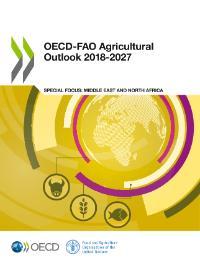
OECD-FAO Agricultural Outlook 2018-2027
13/09/2018
The Agricultural Outlook 2018-2027 is a collaborative effort of the OECD and FAO prepared with input from the experts of their member governments and from specialist commodity organisations. It provides a consensus assessment of the medium term (ten year) prospects for agricultural and fish commodity markets at national, regional and global levels. This year’s edition contains a special focus on the agriculture and fish sectors of the Middle East and North Africa (MENA) region
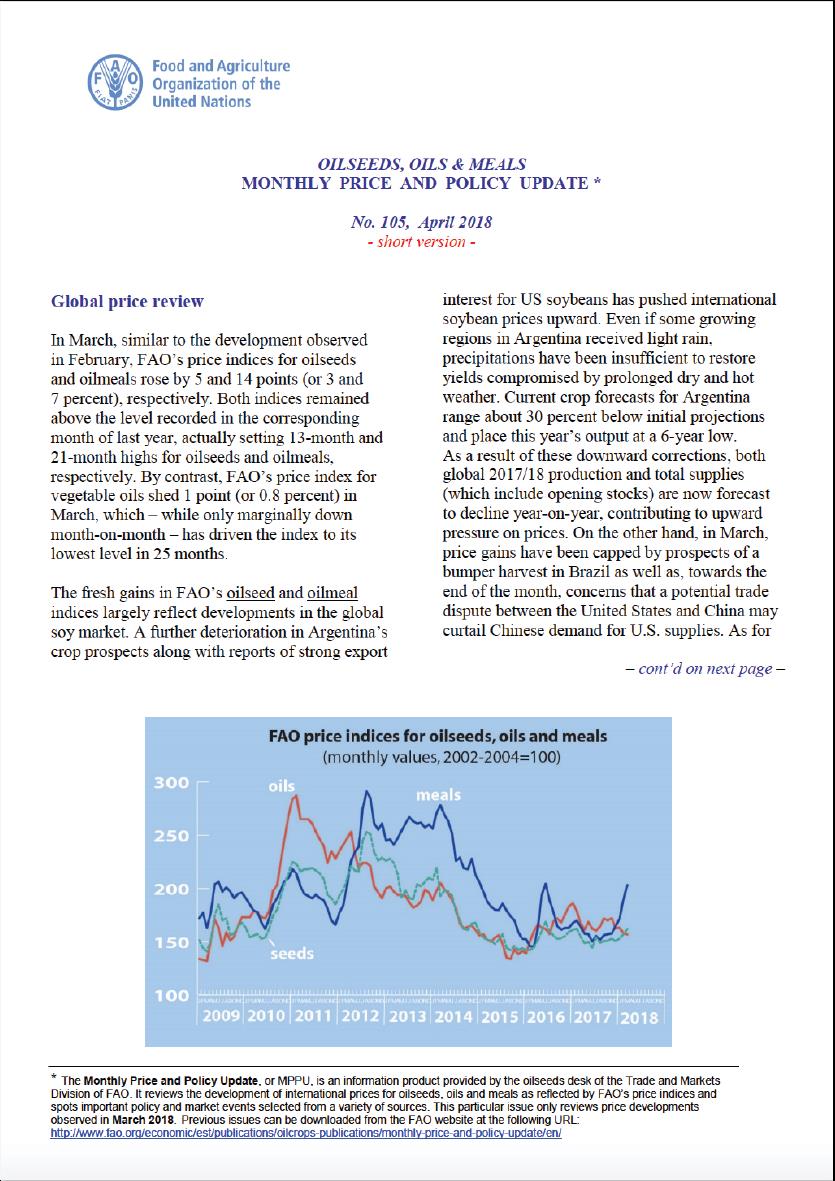
Oilseeds, Oils and Meals. Monthly Price and Policy Update No.105, April 2018
13/09/2018
In March, similar to the development observed in February, FAO’s price indices for oilseeds and oilmeals rose by 5 and 14 points (or 3 and 7 percent), respectively. Both indices remained above the level recorded in the corresponding month of last year, actually setting 13-month and 21-month highs for oilseeds and oilmeals, respectively. By contrast, FAO’s price index for vegetable oils shed 1 point (or 0.8 percent) in March, which – while only marginally down month-on-month – has driven the index to its lowest level in 25 months.
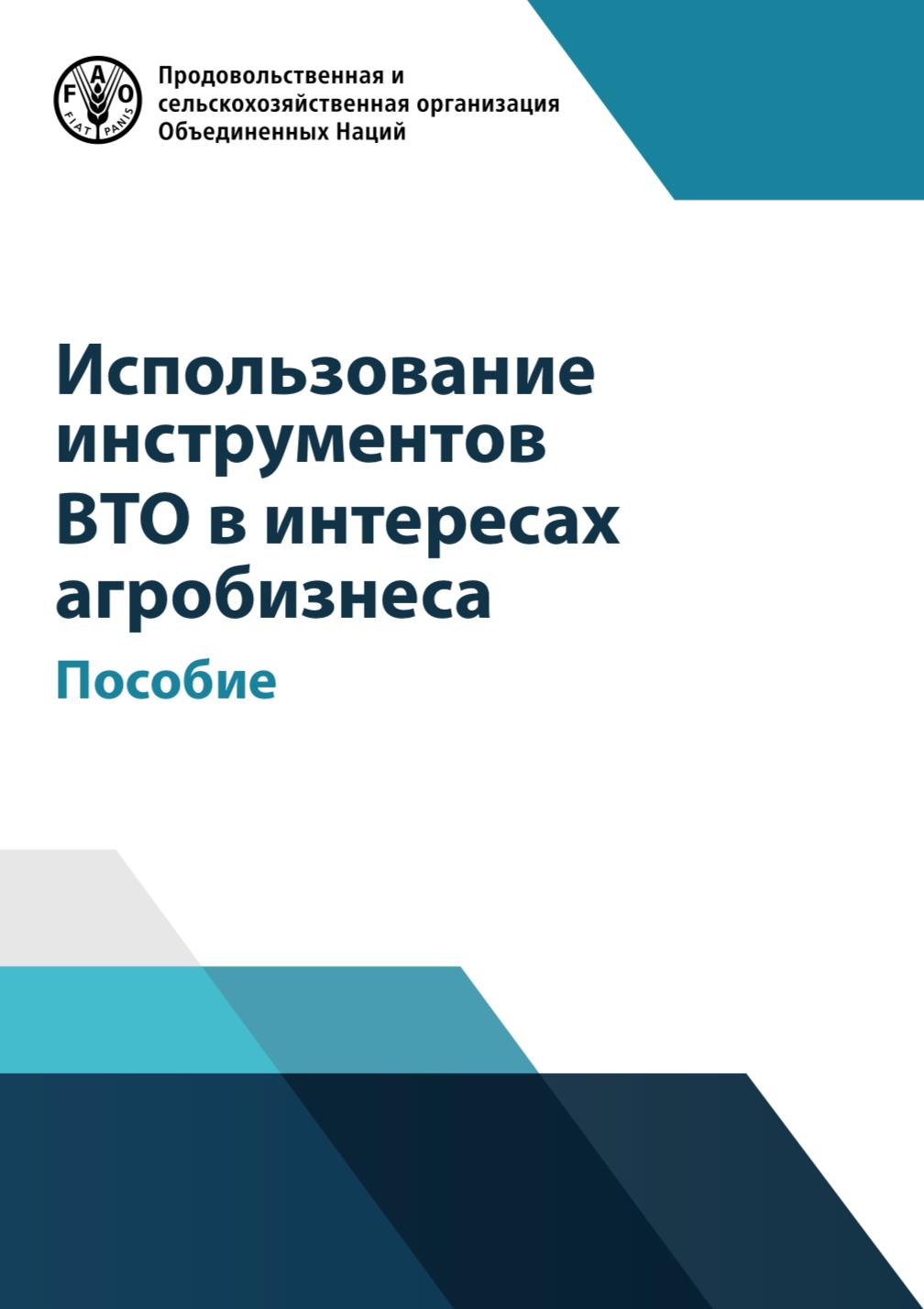
How to use the WTO instruments in the interests of agribusiness: A guide
13/09/2018
This publication provides a broad set of trade and WTO transparency instruments that can be used to improve market-access opportunities in agribusiness.
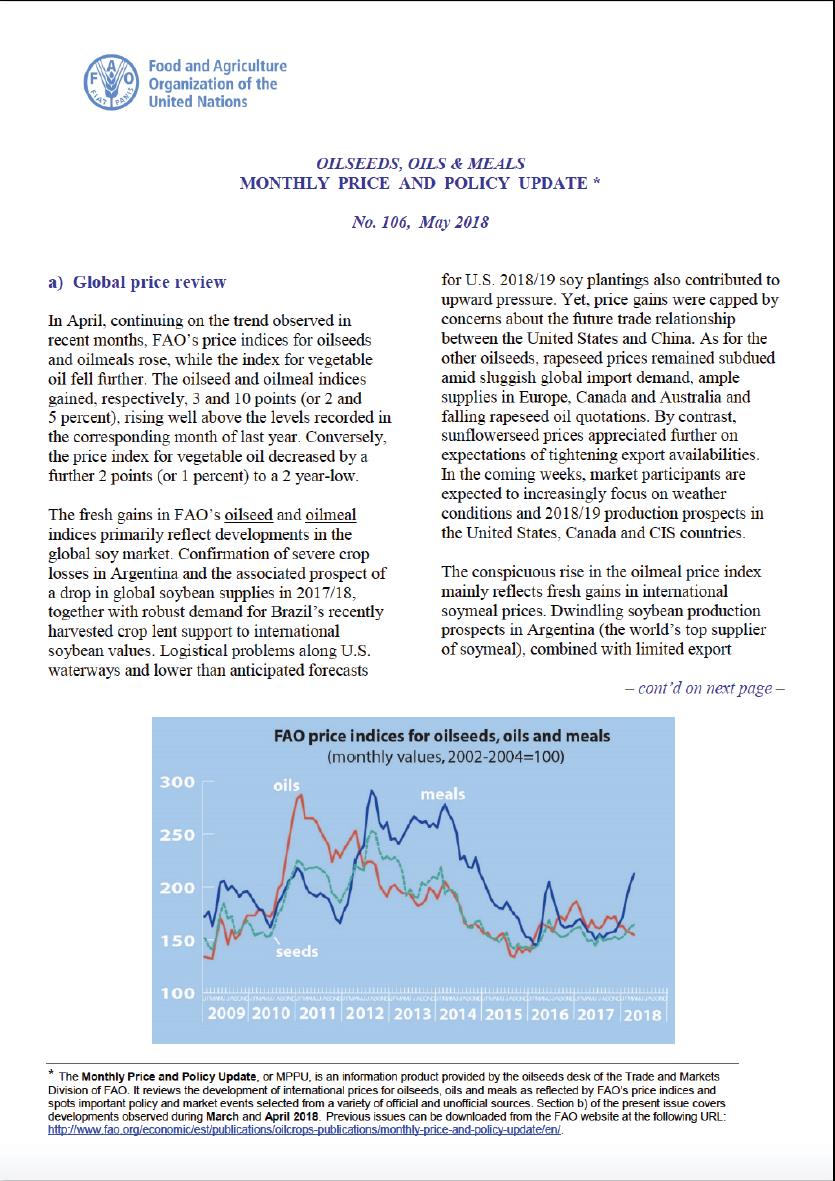
Oilseeds, Oils and Meals. Monthly Price and Policy Update No.106, May 2018
13/09/2018
In April, continuing on the trend observed in recent months, FAO’s price indices for oilseeds and oilmeals rose, while the index for vegetable oil fell further. The oilseed and oilmeal indices gained, respectively, 3 and 10 points (or 2 and 5 percent), rising well above the levels recorded in the corresponding month of last year. Conversely, the price index for vegetable oil decreased by a further 2 points (or 1 percent) to a 2 year-low.
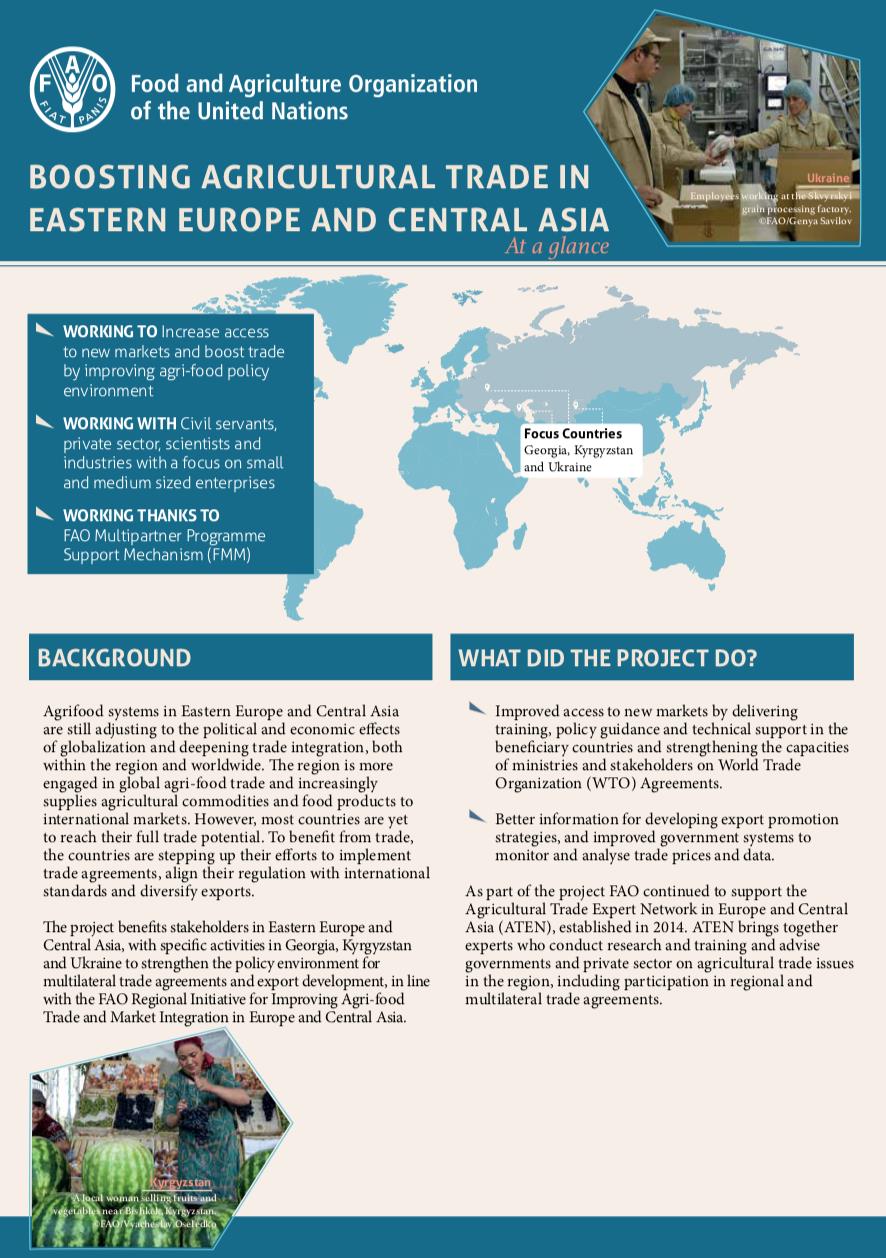
Boosting agricultural trade in Eastern Europe and Central Asia
13/09/2018
Agrifood systems in Eastern Europe and Central Asia are still adjusting to the political and economic effects of globalization and deepening trade integration, both within the region and worldwide. The region is more engaged in global agri-food trade and increasingly supplies agricultural commodities and food products to international markets. However, most countries are yet to reach their full trade potential. To benefit from trade, the countries are stepping up their efforts to implement trade agreements, align their regulation with international standards and diversify exports. The project benefits stakeholders in Eastern Europe and Central Asia, with specific activities in Georgia, Kyrgyzstan and Ukraine to strengthen the policy environment for multilateral trade agreements and export development, in line with the FAO Regional Initiative for Improving Agri-food Trade and Market Integration in Europe and Central Asia.
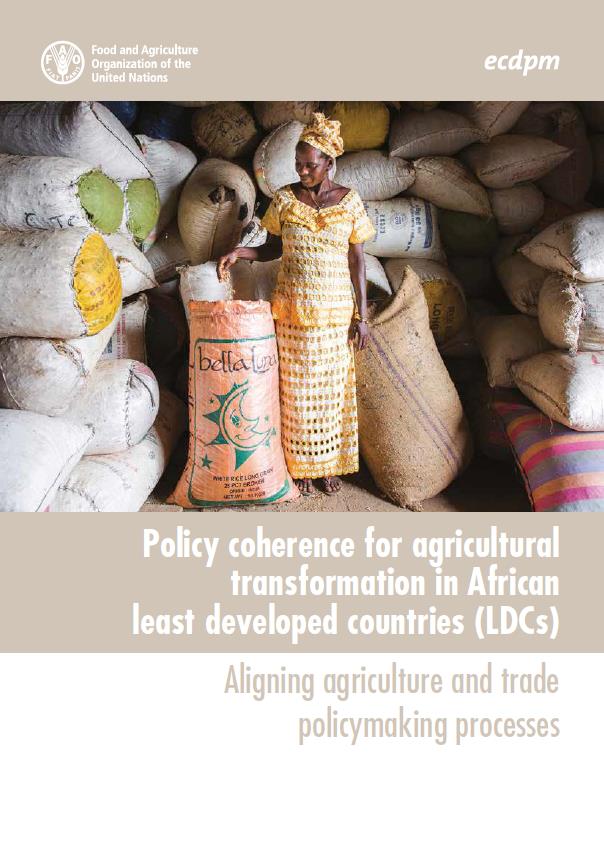
Policy coherence for agricultural transformation in African least developed countries (LDCs)
13/09/2018
In many developing and least-developed countries (LDCs), the transformation of the agriculture sector is key for improving domestic food security and nutrition and for promoting economic development. However, efforts to raise agricultural productivity and develop inclusive and competitive agricultural value chains are often hampered by market- and trade-related bottlenecks, while initiatives promoting agricultural commercialisation, diversification and trade are often curbed by bottlenecks at farm or post-harvest levels. In this context, FAO, in collaboration with the Enhanced Integrated Framework (EIF) and European Centre for Development Policy Management (ECDPM), carried out a Multi-partner Programme Support Mechanism (FMM) Project on Trade related capacity development for food security and nutrition in Eastern and Southern Africa (ESA) to contribute to improved policy coherence for agricultural development and food security in these countries.
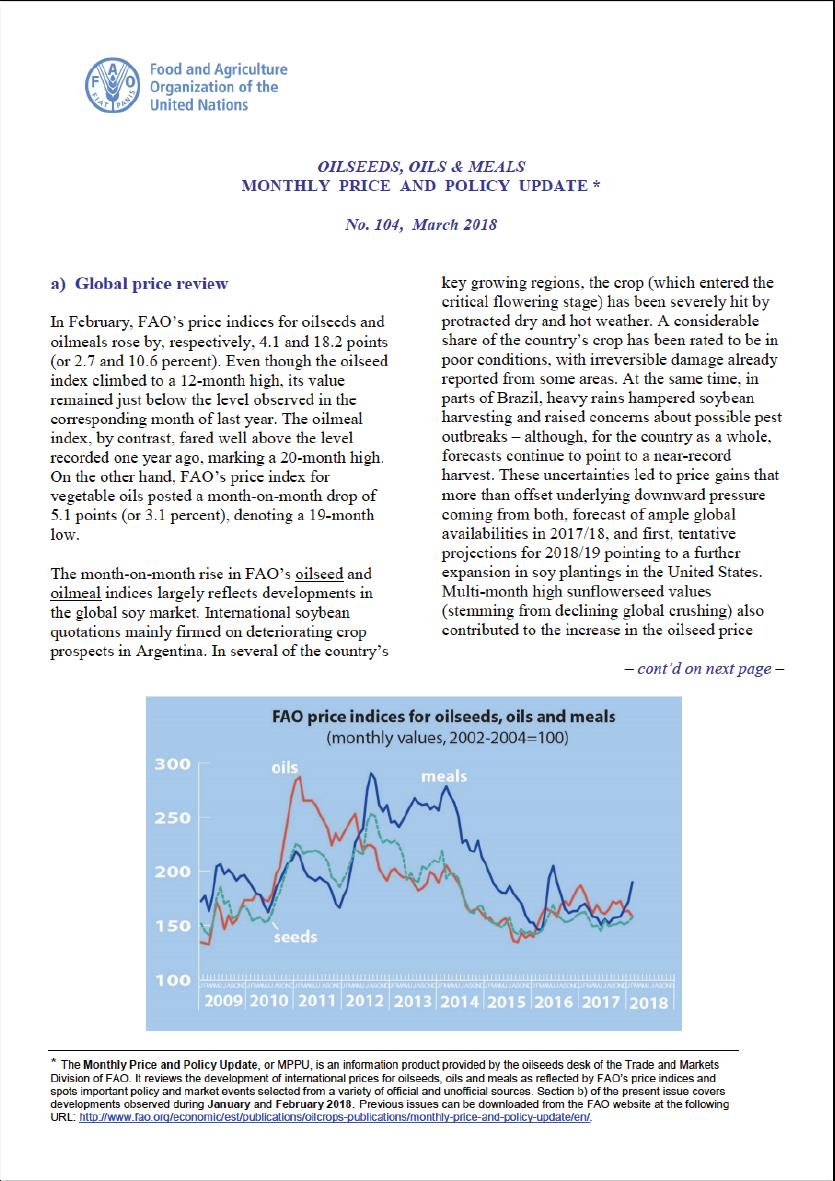
Oilseeds, Oils and Meals. Monthly Price and Policy Update No.104, March 2018
13/09/2018
In February, FAO’s price indices for oilseeds and oilmeals rose by, respectively, 4.1 and 18.2 points (or 2.7 and 10.6 percent). Even though the oilseed index climbed to a 12-month high, its value remained just below the level observed in the corresponding month of last year. The oilmeal index, by contrast, fared well above the level recorded one year ago, marking a 20-month high. On the other hand, FAO’s price index for vegetable oils posted a month-on-month drop of 5.1 points (or 3.1 percent), denoting a 19-month low.
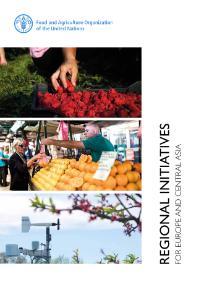
Regional Initiatives for Europe and Central Asia
13/09/2018
FAO ’s three Regional Initiatives for Europe and Central Asia address interlinked issues to ensure the contribution of agriculture to achieve the universality of the Sustainable Development Goals. For this reason, technical teams in the region and at FAO headquarters work in close collaboration to support countries in achieving their goals.
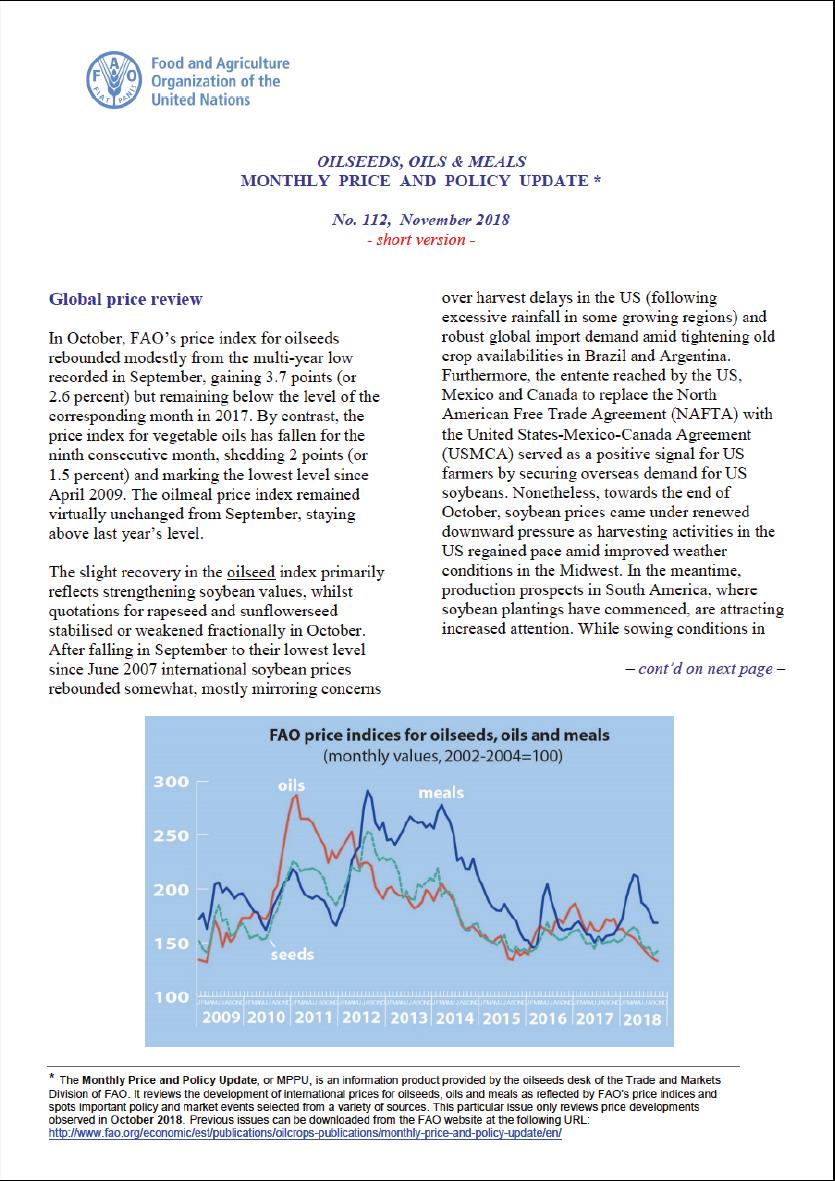
Oilseeds, Oils and Meals. Monthly Price and Policy Update No.112, November 2018
13/09/2018
In October, FAO’s price index for oilseeds rebounded modestly from the multi-year low recorded in September, gaining 3.7 points (or 2.6 percent) but remaining below the level of the corresponding month in 2017. By contrast, the price index for vegetable oils has fallen for the ninth consecutive month, shedding 2 points (or 1.5 percent) and marking the lowest level since April 2009. The oilmeal price index remained virtually unchanged from September, staying above last year’s level.
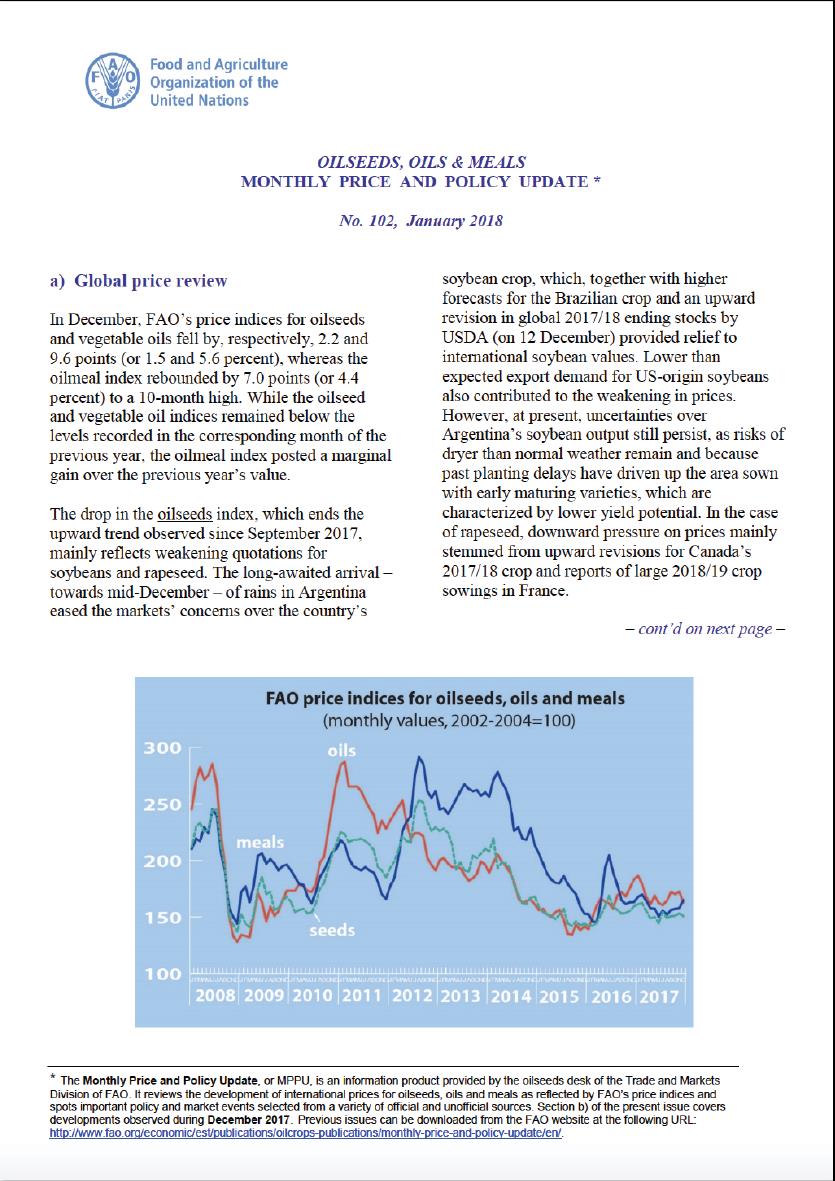
Oilseeds, Oils and Meals. Monthly Price and Policy Update No.102, January 2018
13/09/2018
In December, FAO’s price indices for oilseeds and vegetable oils fell by, respectively, 2.2 and 9.6 points (or 1.5 and 5.6 percent), whereas the oilmeal index rebounded by 7.0 points (or 4.4 percent) to a 10-month high. While the oilseed and vegetable oil indices remained below the levels recorded in the corresponding month of the previous year, the oilmeal index posted a marginal gain over the previous year’s value.
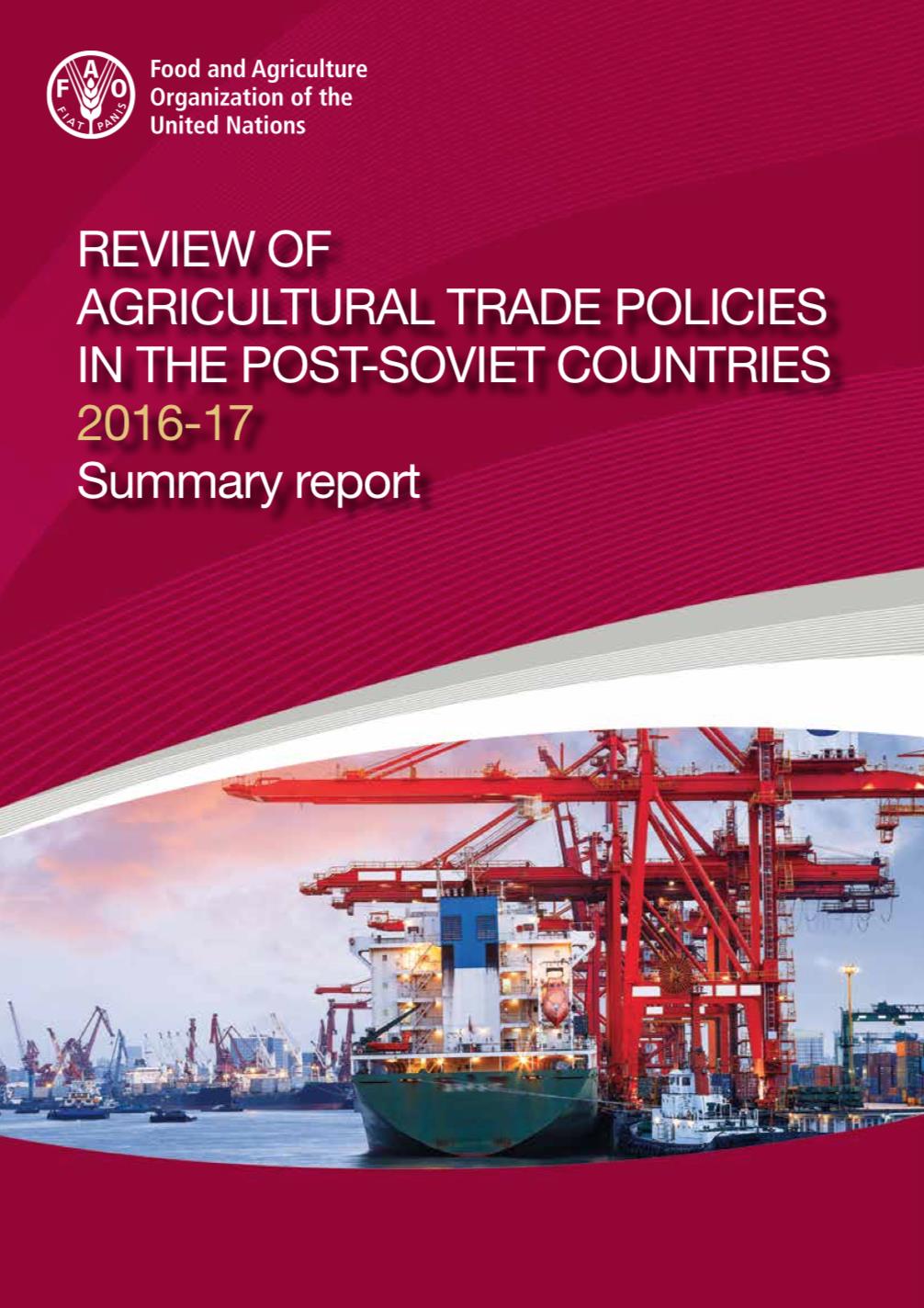
Review of Agricultural Trade Policies in Post-Soviet Countries, 2016-2017
13/09/2018
This document presents an English summary of the “Review of Agricultural Trade Policies in the post-Soviet countries 2016-2017” (FAO, 2018) available in Russian. The purpose of the publication is to provide an overview and analysis of the trends in agricultural trade and trade policies in the post-Soviet countries. The annual review serves to enhance transparency in agricultural trade policy measures, contributing to more stable and effective trade in the Europe and Central Asia region. This summary begins with an overview chapter presenting key developments in agricultural trade in twelve post-Soviet countries in 2016-2017, followed by regional strategies and programmes for agricultural export development, and includes short country chapters on Armenia, Azerbaijan, Belarus, Georgia, Kazakhstan, Kyrgyzstan, the Republic of Moldova, the Russian Federation, Tajikistan, Turkmenistan, Ukraine and Uzbekistan.
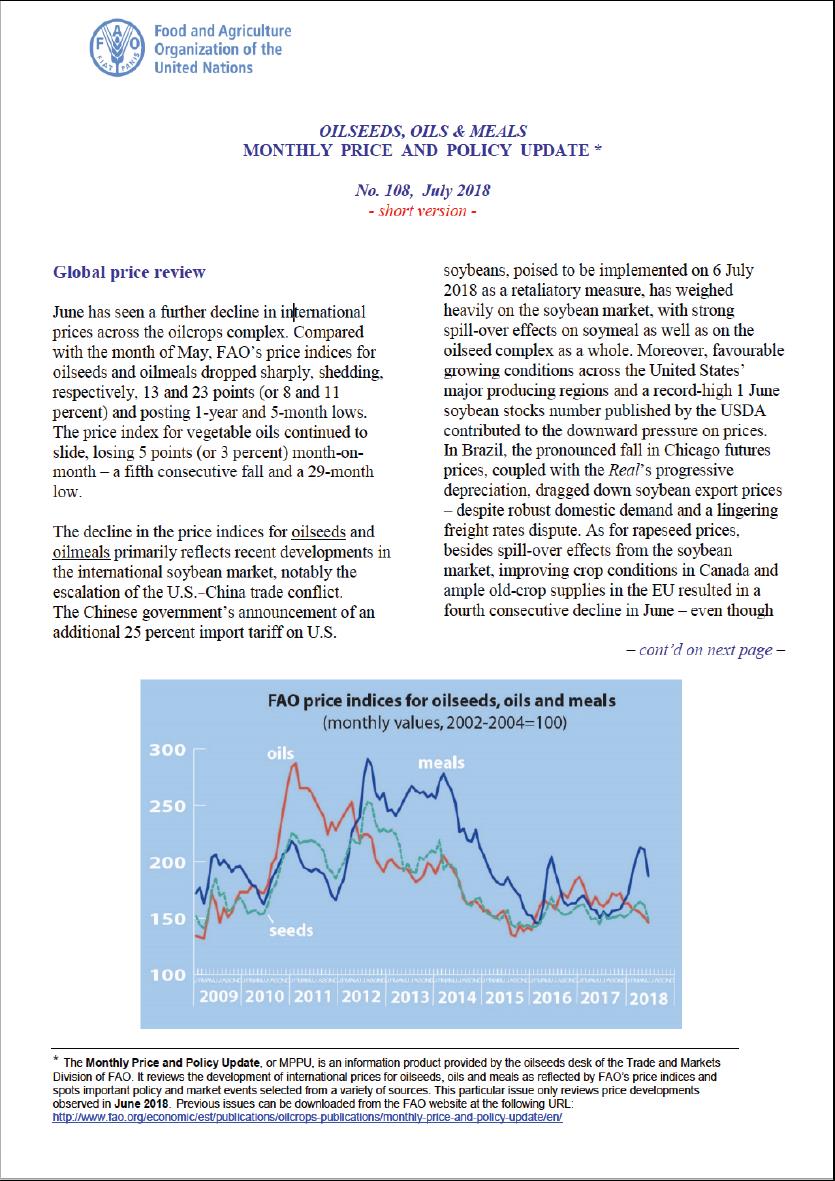
Oilseeds, Oils and Meals. Monthly Price and Policy Update No.108, July 2018
13/09/2018
June has seen a further decline in international prices across the oilcrops complex. Compared with the month of May, FAO’s price indices for oilseeds and oilmeals dropped sharply, shedding, respectively, 13 and 23 points (or 8 and 11 percent) and posting 1-year and 5-month lows. The price index for vegetable oils continued to slide, losing 5 points (or 3 percent) month-on- month – a fifth consecutive fall and a 29-month low.

GIEWS Update - The Sudan, 11 September 2018
11/09/2018
Fuel shortages are reported in several areas in the country, triggering sharp price increases in the parallel market. Prices of most agricultural inputs surged in the last 12 months to more than twice their year-earlier levels. Availability and access constraints to fuel and agricultural inputs are mainly caused by the depreciation of the Sudanese Pound and dwindling foreign currency reserves that have affected imports. Despite the provision of fuel by the Government to the agriculture sector, supply shortages have affected land preparation, planting and weeding operations.
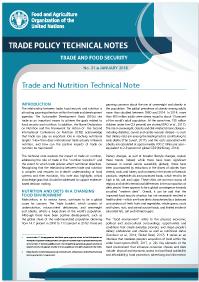
No. 21 Trade and Nutrition
11/09/2018
This technical note explores the impact of trade on nutrition, addressing the role of trade in the “nutrition transition” and the extent to which trade policies affect nutritional objectives.
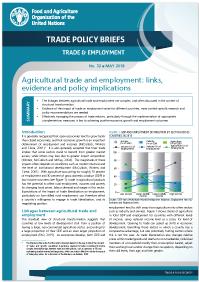
No. 32 Agricultural trade and employment: links, evidence and policy implications
10/09/2018
With agriculture accounting for roughly 70 percent of employment and 30 percent of gross domestic product (GDP) in low-income countries, trade in agricultural products has the potential to significantly affect rural employment, incomes and poverty in these countries.
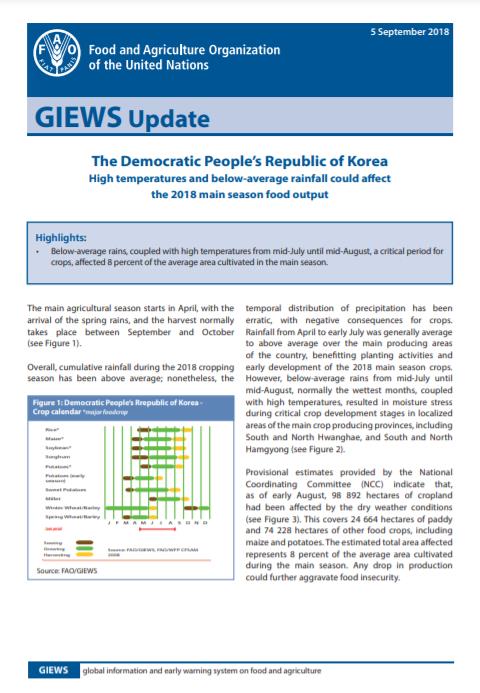
GIEWS Update - The Democratic People’s Republic of Korea, 5 September 2018
05/09/2018
Below-average rains, coupled with high temperatures from mid-July until mid-August, a critical period for crops, affected 8 percent of the average area cultivated in the main season.
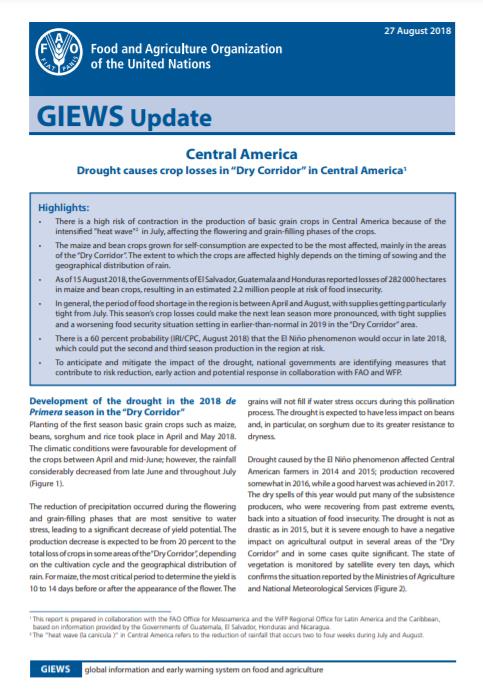
GIEWS Update - Central America, 27 August 2018
27/08/2018
There is a high risk of contraction in the production of basic grain crops in Central America because of the intensified "heat wave" in July, affecting the flowering and grain-filling phases of the crops. The maize and bean crops grown for self-consumption are expected to be the most affected, mainly in the areas of the “Dry Corridor”.
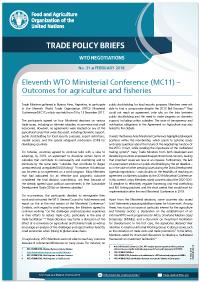
No. 31 WTO Negotiations - Eleventh WTO Ministerial Conference (MC11) – Outcomes for agriculture and fisheries
15/08/2018
Between 10 and 13 December 2017, Trade Ministers gathered in Buenos Aires, Argentina, to participate in the Eleventh WTO Ministerial Conference (MC11). Following the conclusion of the meeting, this brief reports on its outcome, with particular reference to the negotiations on agriculture and fisheries.
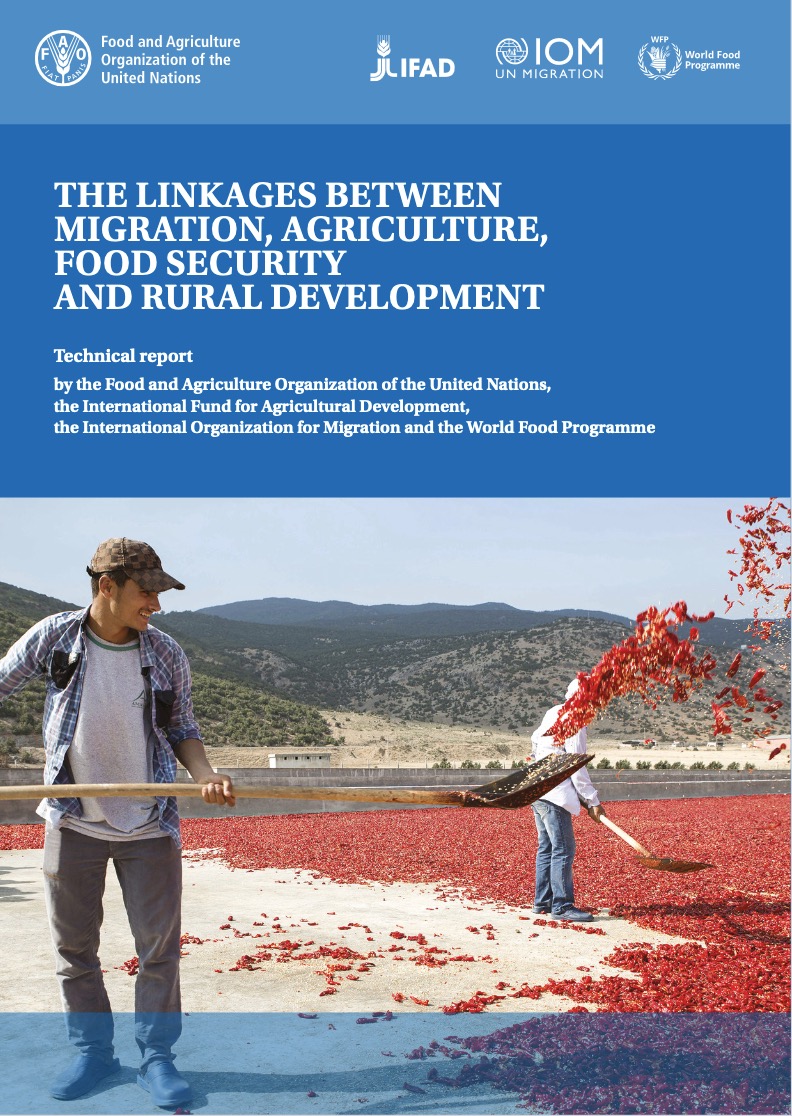
The Linkages between Migration, Agriculture, Food Security and Rural Development
01/08/2018
Understanding contemporary migration, both international and internal, remains a challenge. The decision by people to migrate either within their own countries or across borders is influenced by an intricate set of factors.
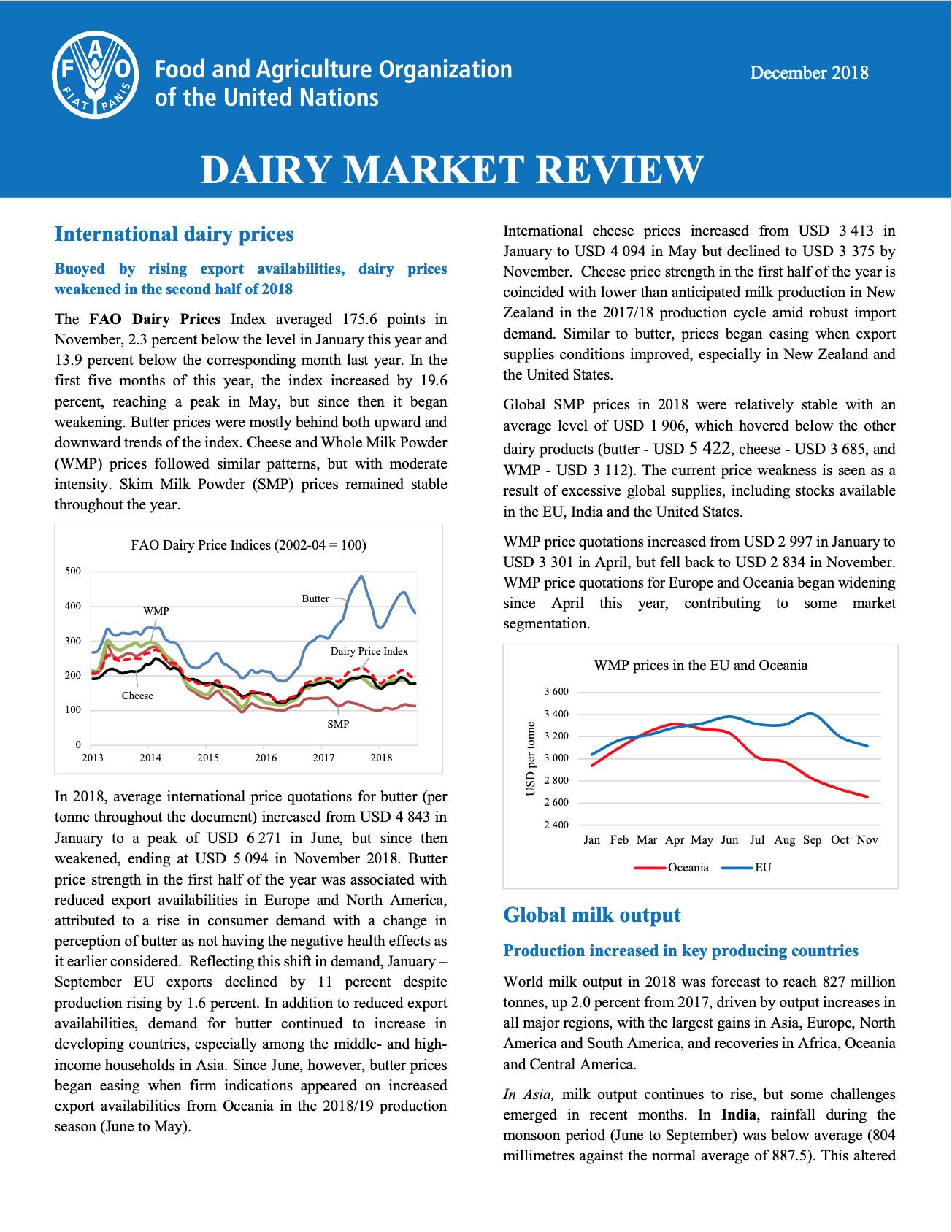
Dairy Market Review - December 2018
12/07/2018
Buoyed by rising export availabilities, dairy prices weakened in the second half of 2018. Milk production increased in key producing countries, including New Zealand in the 2018/19 production cycle. Aided by high production in some regions, global butter supplies improved in recent months, while cheese trade expanded in 2018 at a slow pace than in 2017. Trade in Skim Milk Powder (SMP) and Whole Milk Powder (WMP) expanded on ample supplies and competitive prices.
